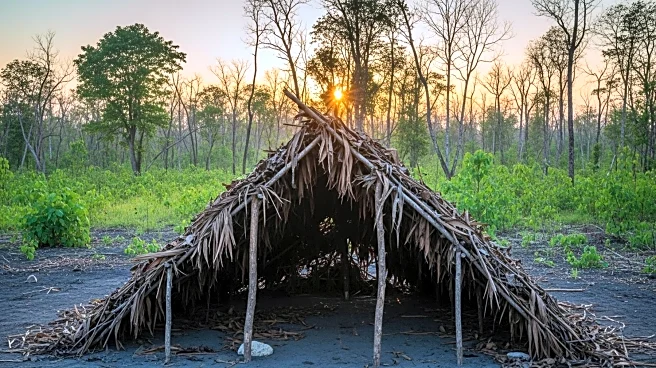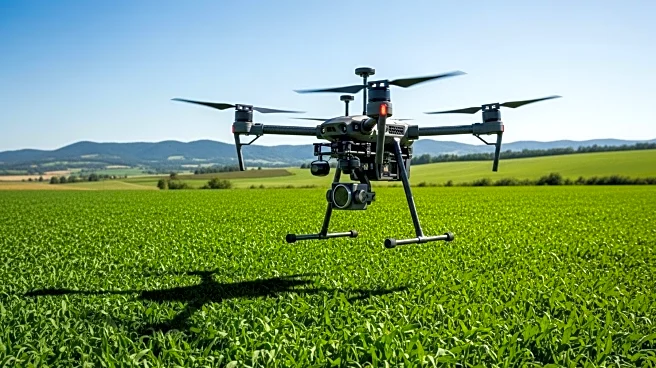What's Happening?
The Toba supereruption, occurring approximately 74,000 years ago, was one of the most significant volcanic events in Earth's history, ejecting 672 cubic miles of volcanic ash into the atmosphere. This catastrophic event, located in present-day Indonesia, had the potential to cause global cooling and environmental devastation. Despite the magnitude of the eruption, which was over 10,000 times larger than the 1980 Mount St. Helens eruption, prehistoric humans managed to survive. The eruption's impact included blocking sunlight, causing acid rain, and burying ecosystems under ash. The Toba catastrophe hypothesis suggests that this event led to a significant reduction in human population, possibly down to fewer than 10,000 individuals. However, archaeological evidence from sites in South Africa and Ethiopia indicates that humans not only survived but adapted and thrived, showcasing their resilience and adaptability.
Why It's Important?
Understanding how prehistoric humans survived the Toba supereruption provides insights into human resilience and adaptability in the face of catastrophic events. This knowledge is crucial for modern society as it highlights the importance of adaptability and preparedness in the face of natural disasters. The ability of ancient humans to innovate and adapt to changing environments suggests that current and future societies can also overcome significant challenges. The study of past volcanic events and their impacts on human populations can inform current disaster preparedness strategies, ensuring that societies are better equipped to handle similar events in the future.
What's Next?
While the Toba supereruption is a historical event, its study continues to offer valuable lessons for contemporary disaster preparedness. Modern programs like the USGS Volcanic Hazards Program and the Global Volcanism Program focus on monitoring active volcanoes to mitigate potential risks. As scientists gather more data from archaeological and environmental records, they aim to better understand the conditions that allowed humans to survive past catastrophic events. This ongoing research could lead to improved strategies for dealing with future natural disasters, ensuring that societies remain resilient and adaptable.
Beyond the Headlines
The Toba supereruption's study also touches on broader themes of human evolution and genetic diversity. The event is linked to a genetic bottleneck, a period when human population sizes drastically reduced, affecting genetic diversity. Understanding these historical population dynamics can provide insights into human evolution and the factors that have shaped genetic diversity over millennia. Additionally, the study of such events underscores the importance of interdisciplinary research, combining archaeology, genetics, and environmental science to build a comprehensive understanding of human history.












